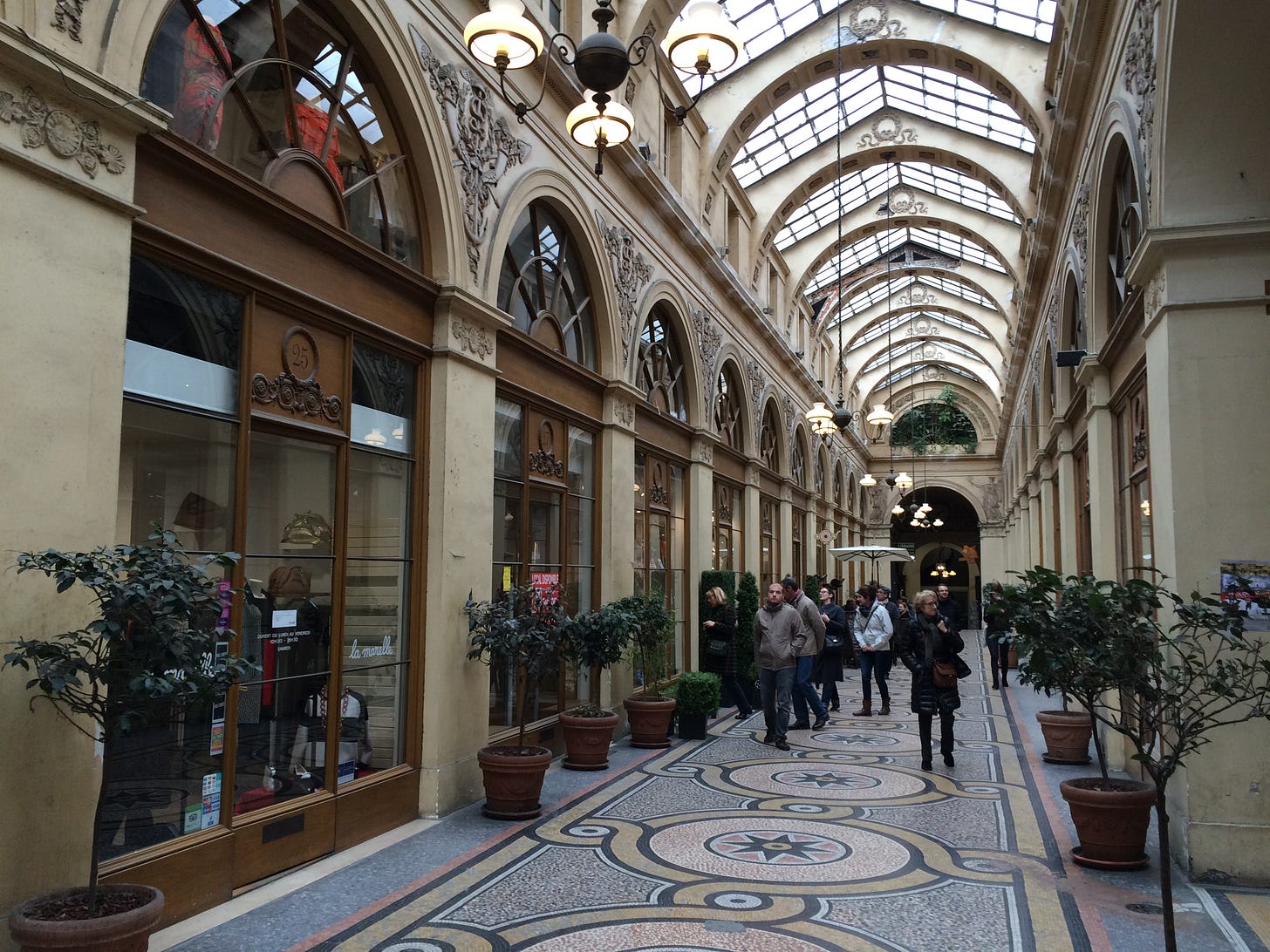WALTER BENJAMIN AND THE ARCADES OF PARIS
A Personal Journey
I journeyed to Paris with a singular purpose: to explore its historic covered passages, or les passages couverts - the city's famed arcades. While many were demolished during Baron Haussmann's grand renovation of Paris in the mid-19th century (commissioned by Napoleon III), a precious few survive, offering glimpses into a forgotten era of urban life.
My fascination with these spaces stems from my doctoral work on Walter Benjamin, the Jewish philosopher and cultural critic whose unfinished masterpiece, The Arcades Project (Das Passagenwerk), centered on these Parisian thoroughfares. Benjamin, inspired by surrealist Louis Aragon's, Le Paysan de Paris, compiled an extensive collection of German and French citations about 19th-century Parisian life, though his tragic death in 1940 left the work's final form a mystery.
These arcades, the predecessors of modern shopping malls, feature elegant glass and iron ceilings that created comfortable spaces for commerce and social interaction. During my visit, amid Paris's persistent spring rains, I explored three interconnected arcades in the Grand Boulevards district and another few in various locations around the city. The three somewhat continuous arcades in the Grand Boulevards district followed a path through the middle of a block of streets. Passing through one of them, I had to exit, cross the street, and enter the next one. These covered passages offered welcome shelter as I wound my way through the heart of city blocks, discovering an eclectic mix of establishments: cafés, bistros, and shops selling everything from vintage cameras, fountain pens, books, candy, food, jewelry, and postage stamps for collectors. In places, the paint was peeling off the walls and the wooden interior, of some, while attractive, looked as if it could use some repair. The arcades were a place where one could see others and be seen somewhat free from the weather. That’s exactly why they were so popular with 19th-century Parisians. It is also why shopping malls are still in vogue today.
One evening, I dined alone at Le Passage des Panoramas, a historic building constructed in 1799. I was seated near the entrance, where the occasional gusts of cool air that came from the open door, reminded me of the arcade’s open-ended design. I watched modern Parisians passing the door follow the footsteps of their ancestors who had walked through this same arcade for over two centuries.
Benjamin viewed the Parisian arcades through a Marxist lens, studying them as early manifestations of capitalism and commodity fetishism. However, his writings on Paris carry an undeniable melancholic nostalgia—what Frederic Jameson, a member of my doctoral committee at Duke, termed “revolutionary nostalgia.”
“Revolutionary nostalgia,” as suggested by Jameson, evokes a longing for the past that transcends mere conservatism or romance. It holds the potential for radical change. Benjamin perceives the Parisian arcades as the birth of modern consumer culture and its potential downfall. These arcades embody both the novel and enchanting nature of capitalism during its early days, when its promises seemed magical and transformative, and the realization that its revolutionary potential remained unfulfilled.
This concept comes alive when we consider Benjamin's particular historical moment. Writing in the 1930s, he was looking back at the 19th century through the lens of impending catastrophe. The arcades represented a moment of possibility - when glass and iron architecture seemed to promise a merging of public and private space, when new forms of social life were emerging. But Benjamin wasn't simply yearning for this past; he was searching in it for unrealized possibilities that might fuel change in his present (and in our future).
The "revolutionary" aspect of this nostalgia comes from its dialectical nature. Benjamin saw in these spaces both the birth of consumer culture AND moments of collective dreaming that exceeded mere commercialism. The arcades were spaces — a dream world —where people came not just to shop but to see and be seen, to promenade, to engage in what he called "flânerie" - a kind of urban wandering that served to display class, wealth, and privilege. Shopping malls today exhibit similar rituals of display and consumption.
While the arcades still function as shopping venues, thy possess an undeniable allure - an echo of a lost era that feels simultaneously foreign and familiar. Their mystery remains elusive, but their charm is irresistible.


